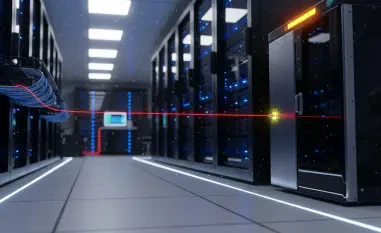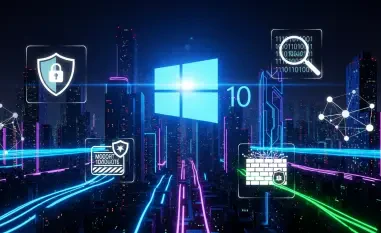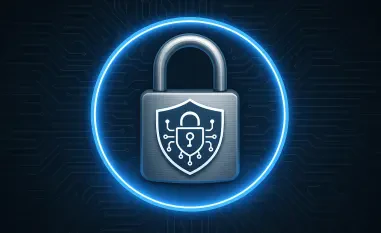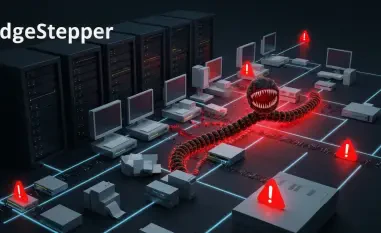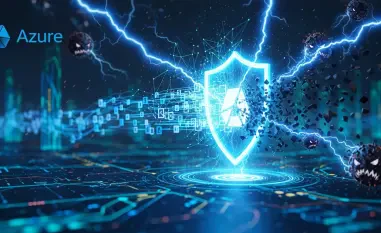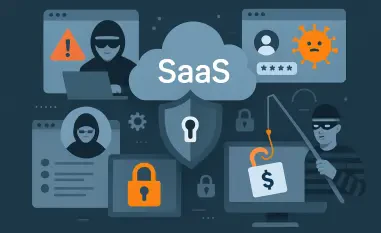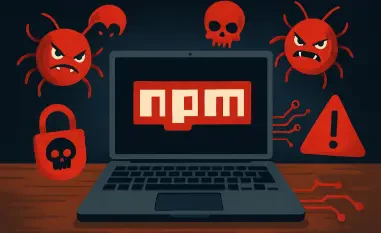In the complex world of cybersecurity, ransomware attacks continue to pose significant threats, exploiting vulnerabilities in various systems, including remote monitoring and management (RMM) platforms. Recent incidents highlight the escalating concentration of ransomware activities on critical system flaws, providing hackers a fertile avenue to infiltrate and compromise systems. The U.S. Cybersecurity and Infrastructure Security Agency (CISA) issued alerts indicating a marked increase in attacks targeting unpatched systems, pushing organizations globally to reevaluate their cybersecurity measures. This article delves into the evolving tactics of ransomware gangs exploiting these vulnerabilities, particularly focusing on the SimpleHelp RMM systems targeted by ransomware actors.
Exploiting System Vulnerabilities
Ransomware gangs currently perceive unpatched vulnerabilities as opportunistic entry points into networks, allowing them to carry out malicious activities with devastating precision. Since January 2025, ransomware actors have notably homed in on these weaknesses, creating a scenario where prompt patching becomes essential in mitigating potential damage.
SimpleHelp RMM System Exploitation
SimpleHelp, a popular RMM tool, has become a focal point due to its vulnerabilities, specifically CVE-2024-57727, CVE-2024-57728, and CVE-2024-57726. These vulnerabilities are related to information disclosure, privilege escalation, and remote code execution, allowing malicious entities to gain access and further breach system defenses. The most affected versions include SimpleHelp 5.5.7 and earlier, exposing substantial security gaps to attackers. Ransomware groups, notably DragonForce, have been especially keen on exploiting these weaknesses, leveraging them to breach costly targets.
The approach taken by these cybercriminals underscores the significance of systems maintaining current security patches and regularly updating software versions. Failure in these measures often results in successful intrusions, as attackers execute their double extortion tactics, exposing organizations to financial loss and reputational harm.
Advisory and Preventive Measures
CISA has been prompt in establishing guidelines aimed at reducing the likelihood of ransomware incidents. These strategies encompass isolating SimpleHelp instances from unfettered internet access, diligently updating software to the latest versions, and providing clear instructions for clients regarding endpoint security intricacies. Such precautions play a pivotal role in safeguarding organizational assets from ransomware exploits. CISA underscores the importance of offline backups, emphasizing that securing and maintaining clean backups can significantly deter the impact of these attacks. Furthermore, CISA advises against fulfilling ransom demands, arguing that such actions encourage further criminal behavior and fail to assure successful data recovery.
Sophisticated Attack Tactics
The intricacies of modern ransomware attacks go beyond exploiting simple technical flaws, revealing a sophistication that combines social engineering, advanced software tools, and unconventional tactics.
Fog Ransomware’s Approach
A notable illustration of modern attack complexity is the Fog ransomware, which targeted a financial organization in Asia utilizing a mix of system vulnerabilities and phishing attacks. Unlike conventional methods, Fog ransomware heavily relies on compromised VPN credentials to achieve unauthorized network access. This method, coupled with the use of deceptive Windows shortcut files, allowed the ransomware to execute attacks that spelled significant financial and data security consequences for its targets.
By utilizing tools common to penetration testing, Fog ransomware effectively circumvents traditional security measures, executing its payload through privilege escalation and memory manipulation tactics. Such techniques enable cybercriminals to remain undetected while ensuring their malicious operations run smoothly, causing widespread disruption before detection.
Pen-Testing Tools and Tactical Deployment
Sophos’s analysis reveals the potential complexity of these attacks, focusing on how pen-testing tools like GC2 and Stowaway contribute to sophisticated attack strategies. The use and integration of authentic employee monitoring software in the attack plan further complicate detection, as seen with the unconventional deployment of Syteca software. This innovation not only displays the evolving nature of cybercriminal tactics but also highlights possible geopolitical motivations behind these attacks, sidestepping mere financial gain for more extensive espionage endeavors. The culmination of these strategies indicates a multi-faceted approach where distraction and opportunistic exploitation play central roles.
The Dynamics of Ransomware-as-a-Service
Ransomware-as-a-Service (RaaS) models, such as those employed by LockBit, illustrate the pervasive nature of these threats, shifting how attacks are carried out and perceived globally.
LockBit’s Aggressive Operations
LockBit, a prominent RaaS model, exemplifies the adaptability of ransomware operations, claiming over 156 victims within six months and generating substantial economic revenue. With a clear strategic focus on regions with expansive industrial bases, the intent behind such attacks involves exploiting manufacturing and production hubs where ransomware can exploit the massive digital footprint and yield enormous financial leverage.
The publicly leaked admin panel data from LockBit has unveiled the sophisticated planning and execution involved, revealing their efforts to expand and refine operations. Preparations to release updated versions like LockBit 5.0 indicate the evolution and waves in ransomware’s developmental phases, targeting improved methods and features adept at bypassing existing defense mechanisms.
Differentiation among RaaS Models
LockBit distinguishes itself within RaaS operations by maintaining aggressive campaigns within geopolitical hot zones, unlike other ransomware groups such as Black Basta and Conti. The audacity to operate within sensitive regions like China without deterrence highlights strategic differentiation from mainstream practices and suggests formidable resilience to potential political repercussions. This boldness signifies a fundamental understanding of regional contexts and willingness to accept risks that others might avoid, marking a new chapter in ransomware operations.
Navigating the Evolving Threat Landscape
With threat profiles becoming increasingly sophisticated, organizations face immense pressure to innovate effective countermeasures against these surmounting challenges.
The Imperative for Holistic Security
A proactive stance, encompassing updated security frameworks and stringent controls, becomes an organizational mandate in a climate where ransomware threats persistently loom. Integrating holistic cybersecurity strategies across technology stacks ensures organizations position themselves for resilience against diverse cyber threats. An organization’s posture may strengthen through a seamless amalgamation of continuous monitoring systems, vulnerability assessments, and targeted employee awareness programs that underscore psychology’s role in manipulating security gaps.
Trend Micro emphasizes that well-coordinated cybersecurity initiatives need to be enforced at all levels of operation, promoting an endpoint-to-cloud security approach that effectively neutralizes sophisticated attack probabilities before they materialize into tangible threats.
Future Considerations in Cybersecurity
As ransomware techniques continue to evolve with technology trends, building and maintaining flexible, responsive security infrastructures pave the way for comprehensive defenses against escalating threats. The path forward necessitates a shift toward adaptive cybersecurity practices that dynamically align with evolving attack methodologies.
By embracing intelligent security investments, collaborative information sharing among cybersecurity entities, and a solid focus on cyber resilience through regular system audits, organizations establish a formidable stance against future adversarial attempts. These initiatives reflect a growing expectation within the security landscape to continually adapt, innovate, and preempt threats, fostering sustainable digital environments resilient against cyber threats.
A New Chapter in Cybersecurity Strategies
In recent years, ransomware groups have increasingly identified unpatched security vulnerabilities as ideal entry points for infiltrating computer networks. These vulnerabilities are akin to open doors for cybercriminals, enabling them to execute harmful operations with alarming accuracy and efficiency. Since the early months of 2025, these ransomware actors have intensified their focus on exploiting such weaknesses. This heightened attention on vulnerabilities underscores the critical need for organizations and individuals to promptly apply patches and updates to their software and systems. As these cyber threats evolve, keeping systems updated with the latest security patches becomes a fundamental step in defense. It acts as the first line of protection against potential intrusions, significantly curtailing the probability of falling victim to such attacks. In essence, timely patching serves as a crucial preventive measure, reinforcing network defenses in an era where cyber threats are not only persistent but also increasingly sophisticated.

